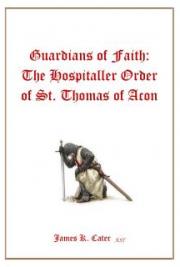FOOTNOTES:
[1] This is a mistake. Dunlap gives a quotation from Burke’s “History of Virginia” as follows: “Under the presidency of Thomas Lee, the New York Company of Comedians obtained permission to erect a theatre in Williamsburg, i. e., in the year 1750, when no New York company existed, or any other on the continent.” The last sentence, “when no New York company existed, or any other on the continent,” is not by Burke, but by Dunlap, which led me to suppose that Burke agreed with Dunlap that the drama was first introduced in America by Hallam. Burke refers to Kean & Murray’s company, who played in New York from the 6th of March to the 30th of April, 1750, and in the subsequent part of the year may have gone to Williamsburg, Virginia, and obtained permission to erect a theater there as stated by Burke.[2] Dunlap afterward acknowledged his error in a manuscript note to his copy of his history, now in the possession of Thomas J. McKee, Esq., of the city of New York.
[2] Burke’s “History of Virginia,” Vols. i and ii. Harpers, 1832.
[3] The advertisement is as follows: “To be Sold at reasonable Rates, All Sorts of Household Goods, viz., Beds, Chairs, Tables, Chests of Drawers, Looking Glasses, Andirons, and Pictures as also several sorts of Druggs and Medicines, also a Negro Girl about 16 years of age, has had the Small-pox and is fit for Town or Country. Enquire of George Talbot, next Door to the Play-House.”—“New York Gazette,” October 15, 1733.
[4] It was in 1766 and not in 1764 that this theater in Beekman street, or, as it was then called, Chapel street, was torn down in a riot growing out of the Stamp Act. The bill for the performance that night was “May 5, 1766, at the theatre in Chapel Street, a comedy called the ‘Twin Rivals,’ with a Song in praise of liberty and the King and the Miller of Mansfield.
“N. B. As the packet is arrived and has been the messenger of good news relative to the Repeal it is hoped the public has no objection to the above performance”—a hope that was not fulfilled.
Gabriel Furman, in a manuscript history of the New York stage, says, “about the year 1761 Phil Miller, well-known in the city for a plodding, active, managing man, obtained permission of Governor Colden to build a theatre and act plays, which he did in Beekman Street, a little below Nassau Street. This was a wooden building, in poor condition, with paper scenery and a wretched wardrobe. The whole was destroyed by a mob, created by the Stamp Act. Phil Miller lost his house and company. He was a jocose fellow and played Justice Gattle with great humor.”
[5] 3 Bancroft’s “History,” n. s., chap. 19.
[6] “Caribbeana,” Vol. i, p. 380. London, 1741.
[7] Spottiswood’s Letters, collections of the Virginia Historical Society, Vol. ii, p. 284.
[8] “History of the United States of North America,” Vol. iii, p. 146, 147: London, 1836.
[9] Cookes “History of the People of Virginia,” Boston, 1890.
[10] Graham’s “History of the United States of North America,” Vol. i, p. 145, and note 1: London, 1836.
[11] Graham, p. 146.
[12] Part III, ch. 6.
[13] “The Drama in New Orleans,” by John Gaisford, etc., pp. 7, 8. New Orleans, 1849.
[14] Davies, “Dramatic Miscellanies,” Vol. iii, ch. 17.
[15] Smith’s “History of New York” with a continuation, pp. 239, 240, 271: Albany, 1814.
[16] This is an error in the writer, they were Norris and Fairbank, and the original Sergeant Kite was Estcourt.
[17] Life of Cibber, by Bell, Chambers ed., 105, 106.
[18] A MS. volume, small 4°, Pp. (xvii), I-CXXX; Appendix, pp. XVI. Handsomely engrossed, with ornamental or fancy lettering for the title, the whole apparently the work of a professional clerk. Bound in old mottled calf, with gilt border, stamped back once gilt and lettered.
POEMS
BY
A. H.
ESQR
MS.
Bought from a London dealer in 1890, by William Nelson, of Paterson, New Jersey.
[19] “New-York Times,” Sunday, December 15, 1895.
[20] Dunlap, p. 16.
[21] Dunlap gives the full cast of the “Merchant of Venice,” the first play enacted by the Hallam Company in America, at Williamsburg, September 5, 1752, as he received it from Lewis Hallam, Jr., by which it appears that Mrs. Hallam, the manager’s wife, was the Portia, that Miss Hallam represented Jessica, “her first appearance on any stage,” and an actor named Malone played Shylock. The author of the novel states that his wish was simply to depict some Virginia scenes and personages ten years before the Revolution, or the Virginia of 1765, and trusts that his picture is at least truthful as far as it goes, which it probably is, with the anachronism of the appearance, in the year 1765, of Miss Hallam, a young girl of about eighteen, as Portia, thirteen years after she had made her first appearance on the stage in the same play as Jessica. But liberties of this kind are pardonable in a novelist. They are taken by great authors. Scott, in his novel of Kenilworth, the scene of which romance is laid in the year 1575, represents Lord Leicester, in passing through the court-rooms, stopping to compliment Shakespeare on the success of his recent poem of Venus and Adonis, Shakespeare being then eleven years of age. The poem was printed in 1593, eighteen years after the event described by the novelist, or when Shakespeare was twenty-nine years of age.
[22] 2 Dunlap, 24, 48: London ed.
[23] I consulted Dr. Dickerman, the most eminent Egyptologist in this country, upon this subject, and his observation was this: The state of mind and the condition of society of the ancient Egyptians were not such as would incline them to theatrical representations. They had athletic sports, games, such as draughts or checkers, and games of chance, but not such a disposition as brought people together to witness anything. None of the buildings whose ruins have been studied indicate that any were constructed with reference to the assembling of people, except the processions, with priests, in the temples, and that the Labyrinth, moreover, in the twelfth dynasty, contemporary with Abraham, had meetings of the delegates from the different nomes, or provinces, to discuss the political affairs of the kingdom.
[24] Smith’s Dictionary, Vol. iii, p. 997.
[25] Gibbon says the Roman people considered the circus as their home, their temple, and the seat of the republic. The impatient crowd rushed at the dawn of day to secure their places; and there were many who passed sleepless and anxious nights in the adjacent porticos. From the morning to the evening, careless of the sun or of the rain, the spectators, who sometimes amounted to the number of four hundred thousand, remained in eager attention; their eyes fixed on the horses and charioteers, their minds agitated with hope and fear, for the success of the colors which they espoused and the happiness of Rome appeared to hang on the event of a race. “Gibbon’s Decline and Fall,” Vol. iv. pp. 87, 88. London edition of 1848.
[26] Collier, 256, 1st. ed.
[27] Prof. A. W. Ward.
[28] Jeremy Collier’s “View of the English Stage,” 1st ed., p. 258.
[29] Bossuet’s Works, Vol. xxxii. Calcraft’s “Defence of the Stage,” p. 12.
[30] Gifford’s “Jonson,” Vol. iii., pp. 162, 163.
[31] Calcraft, p. 61.
[32] Smith’s “Dictionary,” Vol. i, p. 42; Calcraft, 67.







